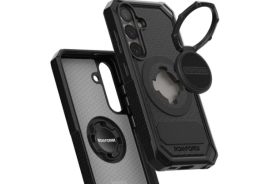Apple unveiled the iPhone 5 on Wednesday to little surprise, revealing an incremental rather than revolutionary upgrade, despite its claims. Following the announcement, fans and tech gurus were quick to make comparisons to other devices; here is how the iPhone 5 compares to the Samsung Galaxy S3.
Hardware
The iPhone 5 is the first iPhone to use a four-inch screen, giving in to the pressure created by Android and Windows Phone 8 devices. Meanwhile, the Samsung Galaxy S3 uses a 4.8-inch display. iPhone 5 uses an 1136 x 640 resolution versus the Galaxy S3's 1280 x 720 display. Both displays are capacitive and support multitouch.
As the thinnest iPhone yet, Apple's device measures 4.87 x 2.31 x 0.31 inches compared to the Samsung's Galaxy S3's dimensions of 5.38 x 2.78 x 0.34 inches. The iPhone 5 weighs 0.25 pounds versus the Galaxy S3's 0.29 pounds. The phones offer two color choices each: black/silver and black/grey for iPhone 5 and white/silver and blue/silver for Galaxy S3.
The devices both have video output and a 3.5mm headphone jack. The Galaxy S3 features microSD support, and the iPhone5 sports the new Lightning adapter; Apple changed the 30-pin connector, as rumored, though it offers an adapter for purchase.
Connectivity
The iPhone 5 was announced for AT&T, Verizon, and Sprint, while Samsung's Galaxy S3 supports those three carriers along with US Cellular. GSM frequencies for the iPhone are 1900, 900, and 850; the CDMA frequencies for the Galaxy S3 are 1900, 800/850, and 2100. Both phones support UMTS, HSPA, and LTE (the first time for Apple).
Both phones support Wi-Fi frequencies 802.11n, 802.11g, 802.11b, and 802.11a. 802, and 11n frequencies for iPhone 5 are 5GHz and 2.4GHz.
GPS and Bluetooth 4.0 are in both phones, along with NFC and tethering/mobile hotspot support. Media Streaming on the iPhone is through AllPlay, with AllShare on the Galaxy S3.
Internals
Apple is using the next-generation A6 processor, which is smaller and faster than previous generations. Samsung uses the Qualcomm Snapdragon S4 processor, which has two cores and runs at a clock speed of 1.5GHz. The iPhone 5's GPU is rumored to be the SGX543 GPU, while Samsung uses the Qualcomm Adreno 220. RAM for iPhone 5 is 1GB while Samsung Galaxy S3 uses 2GB.
The iPhone is available in 16, 32, and 64GB sizes; Samsung is offering 16 and 32GB with external storage, unlike Apple, and microSD cards can increase storage up to 64GB.
Cameras
Apple bumped up the iPhone 5's camera compared to the iPhone 4S and introduced a new Panorama feature that allows users to take wider screenshots. The front cameras for the iPhone 5 and Samsung Galaxy S3 are 1.2 and 1.9 megapixels respectively with a 720p resolution with both using a 30 frames-per-second framerate (FPS).
Apple is now offering an eight megapixel rear camera with LED flash, autofocus, 30FPS, and 1080p resolution output. Samsung's Galaxy S3 also uses eight megapixels with LED flash, autofocus, and a 1080p resolution.
Software
iOS 6 runs on the iPhone 5. Apple claims that over 200 improvements are in the operating system, from the new card-collecting Passbook app to Maps, Apple's replacement for Google Maps. Meanwhile Samsung uses Android 4.0 on its Galaxy S3 with the TouchWiz skin overlayed, soon to be upgraded to Android 4.1.
Battery
Apple claims eight hours of battery usage for iPhone 5, though no extensive real-world testing is available and the battery is not removable. Samsung's Galaxy S3 uses a 2100mAh battery with 9.2 hours of usage that is removable and also supports wireless charging.
© Copyright 2025 Mobile & Apps, All rights reserved. Do not reproduce without permission.












